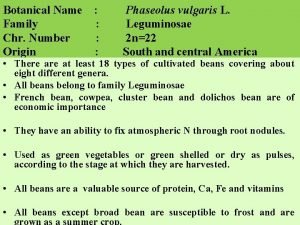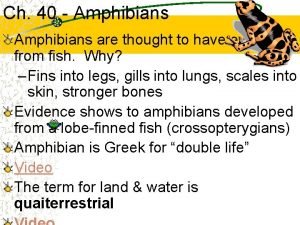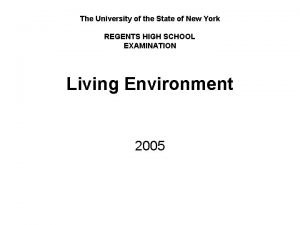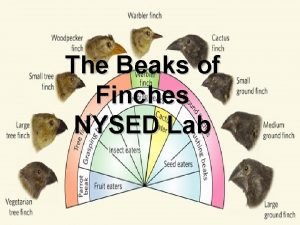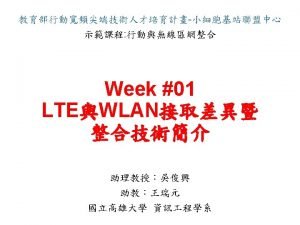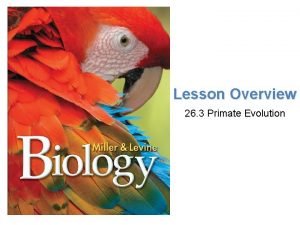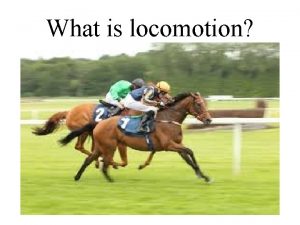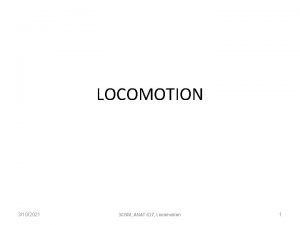Lecture 9 Locomotion Flight Powered flight has evolved










- Slides: 10

Lecture 9 – Locomotion: Flight Powered flight has evolved several times: Pterosaurs Insects Birds

Powered Flight : Bats Supported by digits 2 -5 Skin - patagium

Generation of Lift Laminar flow – parallel movement of air streams Turbulent Flow Velocity across top is higher than bottom. Laminar Flow Bernoulli’s Theorem Lift = P(Lower) – P(Upper) P is air pressure. C is a constant. d is the density of air, and V is velocity.

Bats tend to be slow fliers. Myotis lucifugus (little brown bat)- 20 MPH Eptesicus fuscus (big brown bat)- 40 MPH Tadarida brasiliensis (Brazilian free-tailed bat) – up to 60 MPH

Generation of lift at low flight speeds. 1. Increase camber, or curvature of the wing. 2. Increase angle of attack (even a symmetric airfoil can generate lift this way)

Generation of lift at low flight speeds. 3. Wing size and shape. a. Wing loading: Body weight /surface area. Body Weight Surface Area Wing Load House wren 11. 0 g 48. 4 cm 2 0. 24 g/ cm 2 Glossophaga 10. 6 g 99. 3 cm 2 0. 11 g/ cm 2 Myotis 4. 2 g 67. 6 cm 2 0. 06 g/ cm 2 b. Aspect ratio - length / width Artibeus – low aspect ratio Tadarida – high aspect ratio

Stopping the up-stroke: Shoulder-locking mechanism Greater tuberosity of humerus Mollossids Vespertilionids also. Eumops perotis western bonneted bat

Moderately well-developed shoulder locking. Modest greater tuberosity *Situation similar in phyllostomids

Poorly developed shoulder locking mechanism: entirely muscular. Sac-winged bats – Emballonuridae.

Other Adaptations for Flight Keeled manubrium of sternum. Some (Natalidae) have rigid axial skeleton. 1. Compressed thoracic vertebrae - not fused, but very tightly interconnecting 2. Fused sacral vertebrae and fused lumbar vertebrae
 Like many other holidays halloween has evolved
Like many other holidays halloween has evolved French bean variety pusa parvati is evolved through
French bean variety pusa parvati is evolved through Amphibians are thought to have evolved from
Amphibians are thought to have evolved from Galapagos finches evolved partly due to
Galapagos finches evolved partly due to Evolved analytics
Evolved analytics Why was the inventor of tragedy important to theater
Why was the inventor of tragedy important to theater Nys beaks of finches lab
Nys beaks of finches lab Evolved packet core
Evolved packet core Galapagos finches evolved partly due to
Galapagos finches evolved partly due to Primate evolution
Primate evolution 01:640:244 lecture notes - lecture 15: plat, idah, farad
01:640:244 lecture notes - lecture 15: plat, idah, farad

